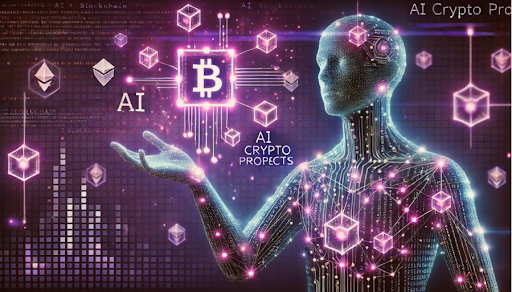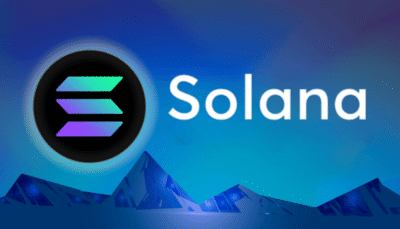The rise of artificial intelligence (AI) in cryptocurrency has created a surge in projects claiming to integrate AI into their technology. From AI-driven trading bots to blockchain-integrated machine learning models, the market is flooded with tokens and platforms branding themselves as “AI-powered.” However, according to experts, many of these projects have little to no real AI technology behind them and are just using AI as a marketing buzzword.
On a recent episode of the CoinRock Show, host Matthias issued a strong warning about the misuse of AI in crypto, explaining that traders need to be more cautious when investing in AI-related tokens.
“There’s a lot of AI in logos, but no AI in the product,” Matthias stated. “People need to understand the difference between actual AI-powered tools and just smart branding.“
So how can crypto traders and investors differentiate between legitimate AI-driven projects and mere hype? Let’s break down the red flags, real-world examples, and expert insights to help you make informed investment decisions.
Why Crypto is Flooded With Fake AI Projects
The AI narrative has become one of the most dominant themes in both tech and finance. With AI disrupting industries worldwide, many crypto projects are leveraging the term “AI” to attract funding and attention.
“AI is the new gold rush in crypto, and just like in any gold rush, most people are selling fool’s gold,” Matthias pointed out.
A report by Messari (2024) found that nearly 60% of AI-related crypto projects have no tangible AI infrastructure beyond simple automation scripts. Many projects claim to offer AI-powered trading, smart contract automation, or predictive analytics, but in reality, their AI capabilities are either exaggerated or non-existent.

How to Identify Fake AI Crypto Projects?
Not all AI projects are scams, but many overpromise and underdeliver. Here are some major red flags to watch out for:
No Technical Whitepaper or AI Explanation
A legitimate AI project should have a detailed whitepaper explaining how AI is being used. A vague description of AI without outlining its technology stack, machine learning models, or real-world use cases is a warning sign. In-fact, a 2023 study by CryptoSlate found that more than 70% of AI-related crypto projects lacked a technical whitepaper, relying instead on marketing-heavy roadmaps with no clear AI framework.
By contrast, legitimate AI-driven projects like SingularityNET (AGIX) and Fetch.AI (FET) provide extensive technical documentation, including detailed explanations of their AI algorithms, research papers, and implementation strategies. This level of transparency is a strong indicator of an AI project’s credibility.
No AI Engineers or Developers in the Team
Real AI projects require machine learning engineers, data scientists, and AI specialists. If a project’s team consists mostly of marketers, influencers, and blockchain developers without any AI expertise, it’s likely not an AI-driven initiative.
A 2024 CoinGecko analysis found that over 60% of AI-labeled crypto projects had no identifiable AI researchers or machine learning experts on their teams. In contrast, legitimate AI-driven projects like Numerai are built by professionals with backgrounds in data science, quantitative finance, and AI research.
The risks of AI-washing in crypto are clear. The now-defunct AI Doge Token, for example, claimed to use AI for automated trading but had no engineers or AI specialists on its team.
Instead, it relied on aggressive influencer marketing, ultimately leading to its collapse in early 2024. This highlights why scrutinizing a project’s team is essential when evaluating AI claims in crypto.
Lack of AI Demos or Open-Source Code
If a project truly integrates AI, it should have demonstrations, case studies, or open-source repositories showcasing its AI technology. Many fake AI projects fail to provide proof of their AI capabilities.
A 2024 Messari report found that only 15% of AI-labeled crypto projects had a working AI model or demo available for public testing. In contrast, legitimate AI crypto platforms like SingularityNET and Ocean Protocol maintain active GitHub repositories, allowing developers to inspect their AI codebase.
Fetch.AI, for example, provides detailed demos of its autonomous AI agents, demonstrating real AI integration. Meanwhile, many smaller “AI-powered” tokens offer no technical proof beyond marketing claims. This lack of transparency is a major red flag for investors evaluating AI-driven crypto projects.
Overhyped Promises and Unrealistic Claims
Be skeptical of projects claiming “guaranteed profits” from AI trading bots or stating that their AI is superior to OpenAI’s GPT models. Advanced AI development takes years, and no project can guarantee financial returns using AI. A 2023 Chainalysis report found that over 40% of AI-powered trading bots in crypto were scams, often using Ponzi-like structures to attract investors.
In contrast, legitimate AI-driven trading bots like Gbot, Cryptohopper, and 3Commas rely on machine learning models trained on real market data to make probabilistic trading decisions—rather than promising guaranteed profits.
The dangers of AI-washing are clear: YieldBot AI, for example, claimed it could deliver 30% monthly returns through AI-based trading but was ultimately exposed as a fraudulent scheme, collapsing in early 2024 and leaving investors with millions in losses.
No Working Product or AI Integration in the Early Stages
A real AI project should have at least a beta version, MVP (Minimum Viable Product), or AI model in testing. If a project is only selling a token without a functional AI component, it’s a red flag.
A 2024 research paper from MIT Technology Review found that most successful AI startups launch a prototype before issuing a token. In contrast, over 80% of AI-based tokens that failed in 2023 had no working product at the time of launch.
Legitimate AI projects prioritize product development before token speculation. For example, Ocean Protocol first introduced a data marketplace prototype before its token gained adoption.
On the other hand, AI CoinX launched a token based on promises of future AI integrations that never materialized—ultimately leading to its downfall.

Examples of Real AI Crypto Projects
While many projects exploit AI for marketing, some are genuinely using AI to enhance blockchain technology. These projects combine artificial intelligence with decentralized systems to create innovative solutions in finance, data analytics, and automation.
Unlike hype-driven tokens that simply use the term “AI” for branding, these platforms have real-world applications and working AI models that add tangible value to the blockchain ecosystem.
One such project is SingularityNET (AGIX), a decentralized marketplace for AI services where developers can create, share, and monetize AI models on the blockchain. By removing the dependency on centralized tech companies, SingularityNET allows AI developers to publish and integrate their models into various applications, from healthcare to automation.
The platform has even collaborated with Hanson Robotics, the creators of Sophia the AI robot, to advance AI-human interaction.
Another leading project is Fetch.AI (FET), which enables autonomous AI agents to execute transactions and manage smart contracts without human intervention.
Fetch.AI is particularly useful in optimizing real-world processes such as supply chain logistics, energy distribution, and decentralized finance (DeFi).
Its AI models can analyze market conditions in real-time and adjust automated trading strategies accordingly. Some energy providers have already adopted Fetch.AI for AI-driven energy trading, making their operations more efficient and cost-effective.
Numerai (NMR) takes a different approach by integrating AI into hedge fund trading. It allows data scientists to compete in building predictive financial models, which are then used to inform real-world stock market trades. The platform leverages encrypted data sets, ensuring privacy while still benefiting from collective intelligence.
Numerai has consistently outperformed traditional hedge funds by using AI-driven forecasts sourced from thousands of global data scientists, making it a unique and highly effective use case for AI in crypto.
These projects stand out because they are backed by real AI infrastructure rather than just marketing hype. They provide technical documentation, open-source code, and working prototypes that demonstrate the practical use of AI on the blockchain.
As AI continues to evolve, projects like SingularityNET, Fetch.AI, and Numerai prove that AI and blockchain can work together to create intelligent, decentralized ecosystems with real-world impact.

Matthias on JeetBot: A Real Example of AI in Crypto Trading
During the discussion, Matthias highlighted JeetBot, an AI-driven trading assistant, as an example of an actual AI-powered tool that leverages machine learning for crypto trading.
“JeetBot is not just an automation script—it’s an evolving AI model that learns from market data to optimize trading strategies,” Matthias explained.
Unlike many so-called AI trading bots that rely on pre-set rules and simple automation, JeetBot analyzes real-time market data, adjusts strategies based on changing conditions, and learns from past trades to improve decision-making.
A 2024 Binance Research Report found that AI-driven trading bots like JeetBot outperformed manual traders by 27% in volatile market conditions, proving that genuine AI can provide real advantages in crypto trading.
How Traders Can Avoid Falling for AI Crypto Hype
If you’re considering investing in an AI crypto project, do your due diligence. Here are some practical steps:
- Research the team – Check if they have real AI engineers and data scientists.
Look for working AI models – Ask if they have demos, beta versions, or AI-powered features in use. - Read the whitepaper carefully – A vague mention of AI without technical depth is a red flag.
- Test the product – If possible, use the platform, AI bot, or tool to see if it actually performs as claimed.
- Check community feedback – Look at developer discussions, GitHub repositories, and unbiased reviews.
AI in Crypto Needs More Transparency
AI is a powerful technology, but in crypto, it has become a double-edged sword. While real AI integration can revolutionize trading, security, and smart contracts, the market is also filled with projects that exploit the AI narrative for quick gains.
“AI and blockchain together can create some of the most powerful financial tools of the future. But traders need to be careful—real AI takes time to build, and many projects are just selling hype,” Matthias concluded.
By being aware of red flags, researching projects thoroughly, and demanding transparency, crypto traders can avoid the hype traps and invest in AI-driven projects that actually deliver on their promises.





